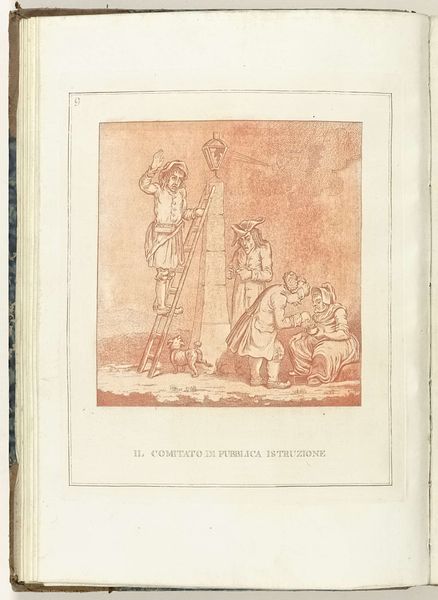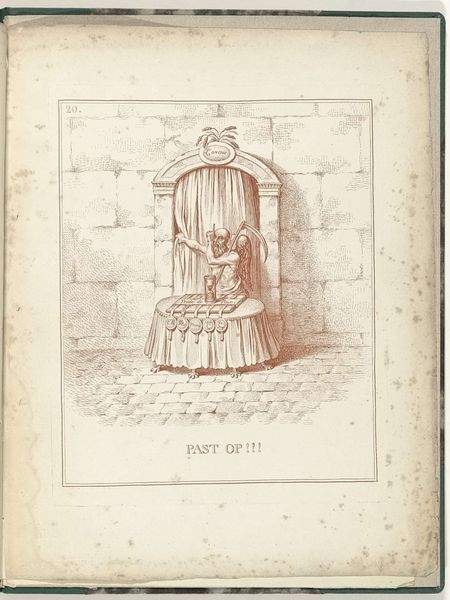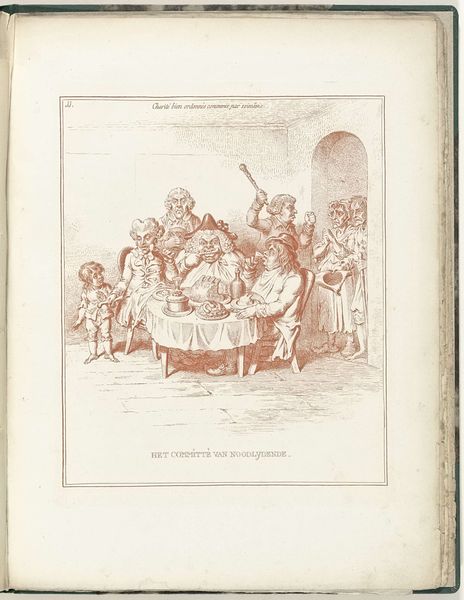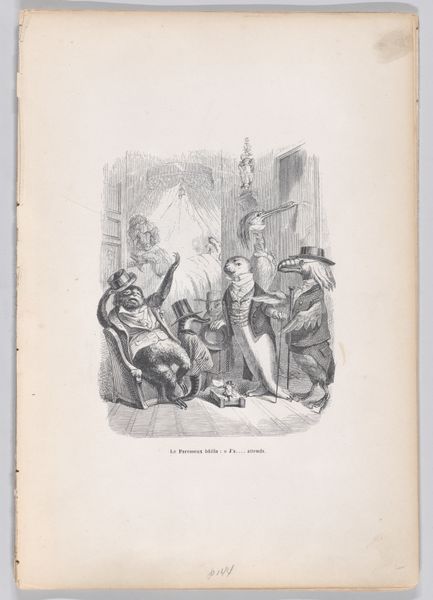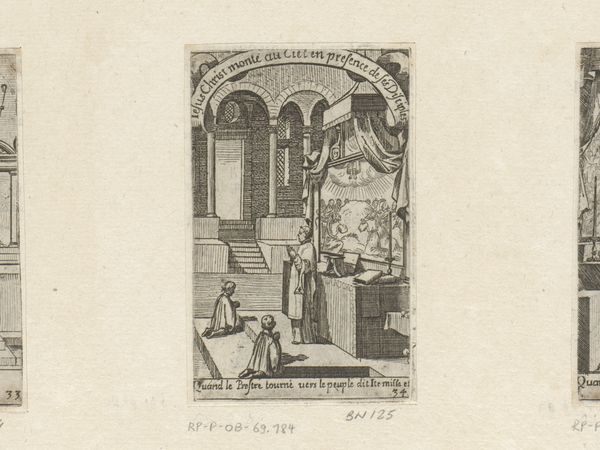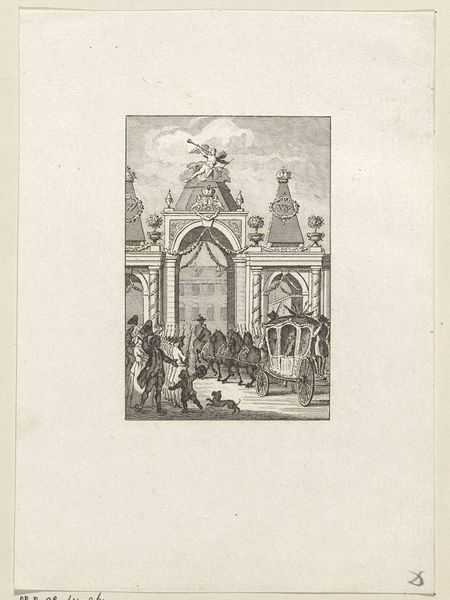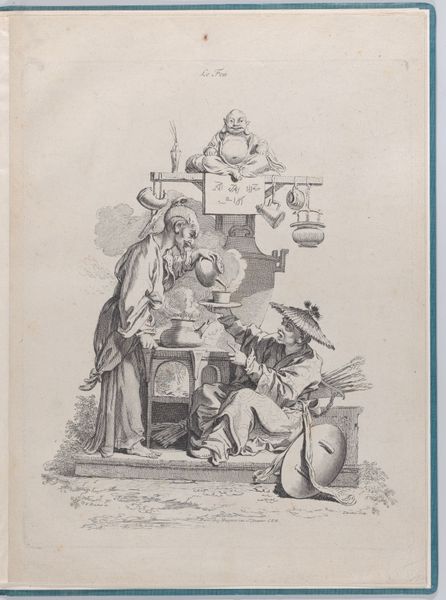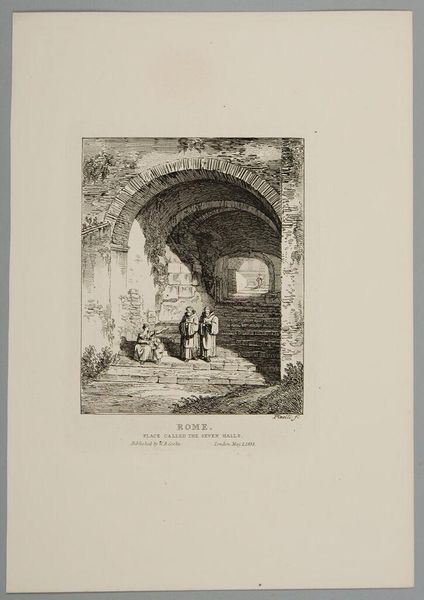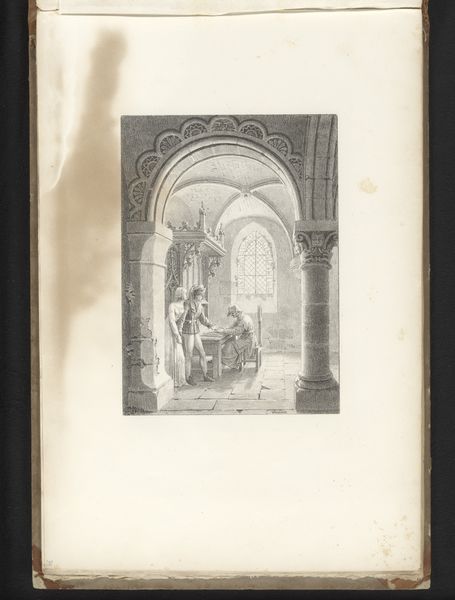
drawing, paper, ink, engraving
#
portrait
#
drawing
#
allegory
#
narrative-art
#
pen sketch
#
figuration
#
paper
#
ink
#
history-painting
#
engraving
Dimensions: height 272 mm, width 220 mm
Copyright: Rijks Museum: Open Domain
Curator: Allow me to introduce an engraving titled "Comité van Remotie," created in 1799 by an anonymous artist. It's rendered with ink on paper. Editor: Wow, what a morbid yet playful scene! It feels almost cartoonish, despite all the skulls and bones. There's definitely a subversive streak here, a bit of dark humor poking fun at something. Curator: Indeed. The artist employs strong allegorical elements to create a narrative, and it seems like a historical commentary—the figures clustered around a tomb, engaging in what looks like destruction, form the visual heart of the composition. The precise linework contributes significantly to its clarity and somewhat detached tone. Editor: Detached is a great word. I mean, they're practically dismantling a tomb while acting like it's no big deal. Look at that one dude casually shoveling bones! There's a tension between the lightness of the drawing style and the weight of the subject matter—death, destruction, the toppling of ideals perhaps? The anonymity makes it more haunting; it’s not tied to a specific artist's bias. Curator: Precisely. This adds a layer of interpretative freedom. Note the symbolism: skulls atop the tomb, hinting at mortality and judgment; the act of defacing a monument which traditionally preserves memory and reputation. This dismantling can be seen as iconoclasm or a deliberate erasing of history. The composition leads our eye towards the inscription on the tomb itself; to analyze it deepens our understanding of the narrative. Editor: So, not just dark humor, but social critique perhaps? This feels revolutionary, doesn't it? Like flipping the bird to the establishment, literally taking a sledgehammer to it! There’s energy in the seeming stillness; the act is still going on. What was it like to hold such a powerful image during that era, printed on humble paper? Curator: Certainly the thematic depth embedded in what might initially appear simple reveals complexity. The artist employs careful planning of forms and an astute engagement with sociopolitical ideas. Its impact resides within the layering of historical allusion, sharp critique, and powerful symbolic expression. Editor: I will look at political cartoons differently after experiencing this. What I initially perceived as straightforward turns out to contain a richer, almost concealed layer of meaning. I suppose appearances can be deceptive even when the bones are all laid out on the floor!
Comments
No comments
Be the first to comment and join the conversation on the ultimate creative platform.
